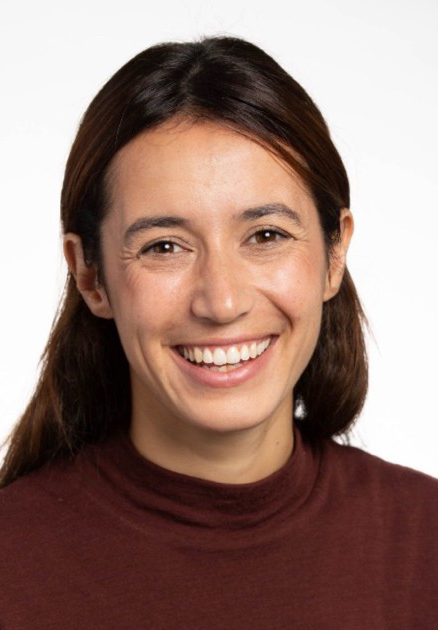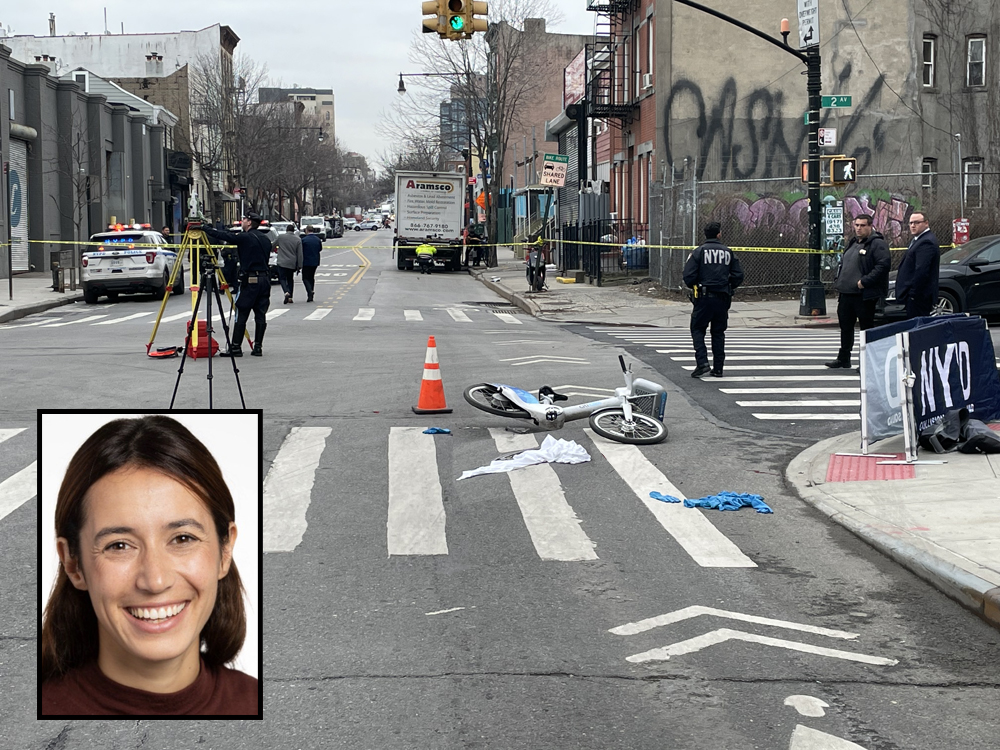How many deaths will it take 'til they know that too many people have died?
The city had an opportunity back in 2004 to make the entire length of Ninth Street in Brooklyn safer for pedestrians and cyclists after two young boys walking home from school were struck and killed by a truck driver near Third Avenue — deaths that came a year after a study showed the intersection to be unsafe. But it didn’t.
And the city had another opportunity, 14 years later, after a driver killed two kids and an unborn baby in a horrific crash on Ninth Street and Fifth Avenue. This time, the Department of Transportation chose only to install a protected bike lane and pedestrian islands between Prospect Park West and Third Avenue, despite pressure from elected officials at the time to extend the improvements to Smith Street.
Now on Wednesday, one day after a truck driver killed 37-year-old Sarah Schick on the unprotected portion of Ninth Street near Second Avenue, advocates again want to know if this is the death that will force the DOT to get stuff fully done.
Once again, the public is outraged by a crash, just as it was in 2018, when Dorothy Bruns hit and killed 1-year-old Joshua Lew and 4-year-old Abigail Blumenstein. Blumenstein's mother, actress Ruthie Ann Miles, who was injured in the crash, also later lost her unborn child.
Four advocates met with DOT officials at the time — and all four were struck by agency's explanation for why it would not add safety infrastructure west of Third Avenue, the exact area that needed more protection.

“They were like, ‘Look, once you get below Third Avenue, it’s less residential, more commercial buildings, less conflict with other intersections down there,’" Aaron Naparstek, a street safety activist and co-host of the "War on Cars" podcast, told Streetsblog. "They had a bunch of reasons like that. It seemed really arbitrary stopping at Third Avenue. It didn't make sense to us. Here’s the result of your unnecessary compromise — four-and-a-half years later, a woman is killed on this stretch of Ninth Street where the DOT could have easily extended the bike lane.
“In retrospect, it was one of these moments that DOT had a chance to really protect Ninth Street, but it chose not to; it decided it was politically difficult to do these extra blocks and now someone is killed because of that decision,” he concluded.
Jump ahead to Tuesday: At about 7:20 a.m, the 39-year-old driver of a 2022 Freightliner box truck was heading eastbound on Ninth Street when he collided with Schick — a wife and mother who lived about a five minute ride from where she was killed — who was pedaling in the same direction on an electric Citi Bike.
She died at the scene — a death that activists say might very well have been avoided if there was some safety infrastructure separating Schick and the trucker, as there is on the rest of Ninth Street.
But the same could be said for the children killed in 2018 — 14 years after 11-year-old Victor Flores and 10-year-old Juan Angel Estrada were killed by a trucker on Ninth Street at Third Avenue.
In fact, Flores and Estrada might have been saved had the city listened to itself — a year earlier, the DOT identified the intersection as dangerous, the New York Times reported. Consultants hired by the city had recommended sidewalk extensions and a reprogramming of traffic lights. But neither happened.
And it’s not just those killed on Ninth Street for whom the city must protect with better infrastructure, but also the 11 cyclists and six pedestrians injured in the 48 reported crashes between Third Avenue and Smith Street since 2020, according to city stats via Crash Mapper.
"[W]est of Third Avenue, where there is considerable truck traffic, neither side has a bike lane at all — a decision made by the Department of Transportation to preserve a small number of parking spaces." NYC priorities: Parking over people. https://t.co/ELsRqtbmQ7
— Sarah Goodyear (@buttermilk1) January 11, 2023
Apparently, despite all the death, DOT still doesn't have a plan.
On Wednesday, Council Member Shahana Hanif, State Sen. Andrew Gounardes, and Assembly Member Jo Ann Simon met with the Department of Transportation — and Hanif told Streetsblog that she was disappointed that DOT wasn't armed with immediate ideas about how to make the area safer. Instead, the agency said it is studying the crash and will conduct a "walk-through" at the intersection as early as next week.
“This is not the first time that we’ve heard complaints or folks have gotten into crashes,” Hanif said. “DOT didn't make immediate commitments, they did say they want to conduct a study and get clarity on the investigation to have a better understanding of how the crash occurred.”
Hanif says hardening and extending the Ninth Street bike lane to Smith Street is one of her biggest priorities this year.
And for Maria Stylianou, whose husband Andreas Stylianou was killed in December 2019, not far from where Schick died, the city’s failure to keep people safe below Third Avenue is just malpractice.
“Seeing Ninth Street blocked off, and hearing the sirens blaring, stirred up horrible memories of the worst moment in my life. Andy was a local business owner, and a wonderful man,” said Stylianou, a member of Families for Safe Streets. “He was killed because our streets are unsafe. It is shocking that the protected bike lane on Ninth Street stops so suddenly, putting people in danger. Halfway measures aren't acceptable when lives are at stake.”
A spokesperson for DOT told Streetsblog that the agency is reviewing the crash to explore safety enhancements, but that its “significantly narrower stretch” requires additional study. That section of Ninth Street is "narrow" because the curbside lane on both sides of the block between Third and Second avenues is set aside for the storage of parked cars.
“Every life lost on city streets to traffic violence is an unconscionable tragedy. The investigation for yesterday’s crash remains ongoing, and DOT will review street design at the location as we do for every crash,” said the spokesperson, citing the city’s nearly $1 billion investment in street redesign and enhancement of more than 1,400 intersections last year. “But we can and will do more. Our thoughts are with the victim’s loved ones as we grieve individually and collectively for those killed on our roads.”
This is almost the exact spot where I was honked at and nearly run down while biking a few months ago.
— Steve Burns (@StvBurns) January 10, 2023
9th Street is a popular bike route, but on this block the city decided to prioritize parking rather than continuing the lane. https://t.co/nxZ6lj7Jmp






